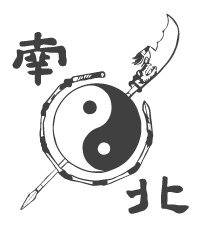According to history, the northern style of Praying Mantis was created by Wong Long from Shandong Province during the end of the Ming dynasty to the Qing dynasty. He practiced at the Shaolin Monastery during his youth and when the temple was burned down by the government he fled back to Shandong. Wong Long and his elder kung-fu brother practiced together and due to his small stature and skill, Wong Long lost constantly even after three years of hard training. One summer, while he rested underneath a tree he saw a fight between a praying mantis and a cicada. Although the mantis was smaller in size, it won the fight. He was impressed by the mantis’ fighting and took a few back to research its movements. He devised new techniques and combined them with his Shaolin techniques which became known as the Mantis style. After he refined his mantis techniques, he was then able to beat his elder kung-fu brother.
The Praying Mantis style branches off into five major styles: (1) Plum Flower Praying Mantis, (2) Tai Chi Praying Mantis, (3) Seven Star Praying Mantis (4) Praying Mantis and (5) Six Harmony Praying Mantis.
Tai Chi Praying Mantis is characterized with quick and continuous hand techniques which are soft yet hard. The hands, eyes, body and movements are quick, clear, and accurate. The style uses Monkey footwork, giving the style light footwork, jumping and speed.
It was not until the 7th generation of Tai Chi Praying Mantis did Tai Chi become a part of the system. Grandmaster Chiu Chuk Kai included into the style (1) Cloudy Palms, (2) Single Person Push Hands, and (3) Tai Chi Chuan, Tai Chi Sword, Tai Chi Fan and Tai Chi Sabre. The origin of Tai Chi Chuan comes from Chen’s village, a new style from Chen You Ping(陳有平) also called the small circle fist (小圈拳). Cloudy Palm was taught to Grandmaster Chiu by a Taoist Priest (道士) named Cheung Man Chau (張萬秋), on a misty mountain thus naming the form “Cloudy Palm”. Tai Chi Praying Mantis has more than 50 forms, and Grandmaster Chiu’s most famous weapon is the Seven Section Chain Whip.

